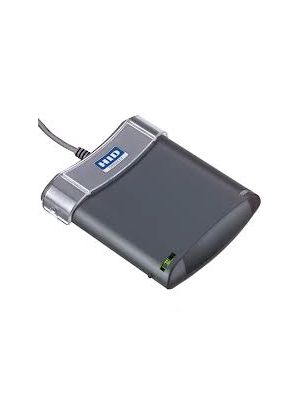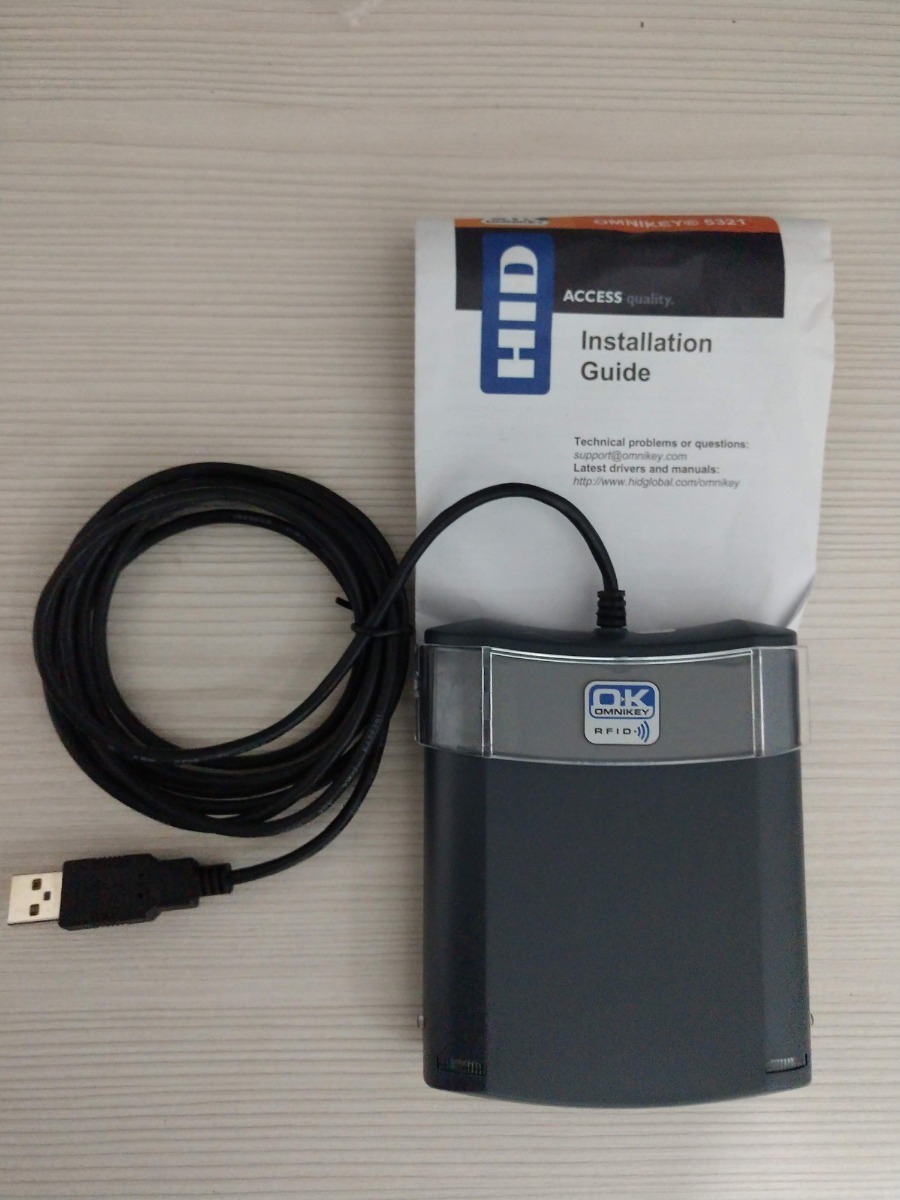
The HID OMNIKEY® 5321 CL is a PC-linked contactless smart card reader that will read/write to a 13.56 MHz RFID contactless smart card. The use of contactless smart card technology for PC-linked applications is limited only to your imagination! The OMNIKEY 5321 CL allows users to experience the convenience, speed, and security of contactless technology for applications including log-on to Windows®, networks, websites, and applications or the secure storage of user names, passwords, and personal information. Housed in a robust closed housing with a convenient card retainer, the OMNIKEY® 5321 CL represents the ideal card reader for contactless technology applications. Featuring a PC-linked reader that reads/writes to 13.56 MHz contactless smart cards in all three HF standards, the OMNIKEY 5321 CL economically supports end-user environments where a variety of contactless cards and tags are used. Utilizing contactless smart card technology for PC-linked applications, the OMNIKEY® 5321 CL device allows users to experience the convenience, speed and security of contactless technology for applications, including logon to Windows®, networks, web sites and applications for the secure storage of user names, passwords and personal information.
Hid omnikey 5321 iso#
The OMNIKEY 5321 CL support all contactless cards, Passports and e-ID cards compliant to ISO 14443 A/B and ISO 15693 standard. Furthermore it can read write to NXP® Java Card, MiFare® cards including MiFare Plus, MiFare Desfire® and HID iCLASS.
Hid omnikey 5321 install#
Note that there's no mention of proxy settings, PAC files, or any of that other fun.Easy to install and can be used with naviGo software to converge access from the door to the logging onto PCs.Can be used with existing ID cards to leverage investment as it reads a variety of technologies.Does not require organizations to re-badge, issue a new token or make any changes to their physical access control system.Secure authentication device for logging on to PC or IT infrastructure.ISO 15693 tags like Infineon® my-D®, NXP iCode® and TI Tag-It® are also supported. Here's a doc on setting up a WSA that I used: (pg 16/17) If you use PAC, or set the proxy settings (manual or via group policy) you're forcing all traffic to the WSA (though you can configure exceptions on each machine). ) This means that the only traffic that gets to the WSA is traffic destined for the other side of the router/firewall. if the router/firewall sees that the "web cache" (aka the WSA) is up and ready for traffice, it sends the traffic there instead of out to the next hop. When you use WCCP, traffic bound for the internet goes to your router or firewall.

You're using transparent with WCCP, yes? So you don't need the IE proxy settings AT ALL, nor do you need the PAC file. You should see a log of what the WSA sees.


To look at the access log, make a note of the IP of the workstation you are testingĮnter the number of the log you wish to grep.ĭo you want this search to be case insensitive? > yĭo you want to search for non-matching lines? > nĭo you want to paginate the output? > n If its failing because you require authentication, you could set up an identity for user-agent for the HID software or the destination authentication boxes and not require the WSA to have authentication for them. If that makes it work, but you don't want to use bypass, I'd look at the access log when this process happens. That should at least tell you if the WSA is seeing that traffic. Have you tried putting the authentication servers in bypass? (Web Security Manager>Bypass Settings) This bascially makes the WSA ignore any traffic to the IPs you put in there.


 0 kommentar(er)
0 kommentar(er)
